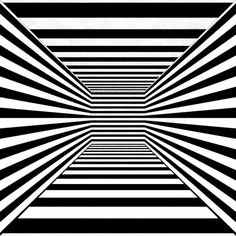|
|
|
Color Code(s) |
Color codes are symbolic systems that align distinct colors with changeable identities or values.
Oxford English Dictionary. Code. 3a. A system of military or naval signals.
3c. Computing. Any system of symbols and rules for expressing information or instructions in a form usable by a computer or other machine for processing or transmitting information.
Examples:
![]() Class by "collar": Working Class as Blue
Collar; Professionals or executives as White Collar workers; secretarial class
as Pink Collar; Technicians as Gray Collar
Class by "collar": Working Class as Blue
Collar; Professionals or executives as White Collar workers; secretarial class
as Pink Collar; Technicians as Gray Collar
![]() Stoplights: Green for Go; Yellow for Caution;
Red for Stop
Stoplights: Green for Go; Yellow for Caution;
Red for Stop
![]() Politics: Red States as conservative Republican
and Blue States as liberal Democrat
Politics: Red States as conservative Republican
and Blue States as liberal Democrat
![]() Race /
ethnicity: Skin color as persistent indicator of class, immigrant, or
minority status
Race /
ethnicity: Skin color as persistent indicator of class, immigrant, or
minority status
Question: Are such associations natural and automatic or cultural and learned?
Color code as skin color + other associated issues.
Literary and cultural studies usually represent the extremely sensitive subject of skin color infrequently, indirectly, or symbolically.
![]() Western civilization transfers
symbolic values associated with “light and dark”—e. g., good & evil, rational /
irrational—to people of light or dark complexions, with
implications for
power, validity, sexuality, etc., as in the
Gothic or
Manichaeism.
Western civilization transfers
symbolic values associated with “light and dark”—e. g., good & evil, rational /
irrational—to people of light or dark complexions, with
implications for
power, validity, sexuality, etc., as in the
Gothic or
Manichaeism.
![]() Literature describes
minorities
mostly as a historical
phenomenon, but physical or visual aspects of human identity may be
more immediate or sensory than history. People may interact
more easily with others who look like themselves or their family or neighborhood.
(Inter-racial marriage is most common among military veterans and people
from mixed neighborhoods.)
Literature describes
minorities
mostly as a historical
phenomenon, but physical or visual aspects of human identity may be
more immediate or sensory than history. People may interact
more easily with others who look like themselves or their family or neighborhood.
(Inter-racial marriage is most common among military veterans and people
from mixed neighborhoods.)
![]() Skin color
signifies as a marker of identity and difference
in race, class, or even gender—how much may vary with circumstances.
Skin color
signifies as a marker of identity and difference
in race, class, or even gender—how much may vary with circumstances.
![]() Dark & light or black & white have
many shades between,
but terms or descriptions are sensitive and change rapidly to avoid
stereotyping. For example,
Dark & light or black & white have
many shades between,
but terms or descriptions are sensitive and change rapidly to avoid
stereotyping. For example,
![]() mulattoes, creoles, half-breeds, mixed-bloods,
mestizos,
biracial (see tragic mulatto)
mulattoes, creoles, half-breeds, mixed-bloods,
mestizos,
biracial (see tragic mulatto)
![]() in-between color traditionally symbolizes hopes
and fears from both sides of a cultural divide.
in-between color traditionally symbolizes hopes
and fears from both sides of a cultural divide.
![]() an in-between person may find him- or herself caught
between two worlds, or more or less at home in two worlds.
an in-between person may find him- or herself caught
between two worlds, or more or less at home in two worlds.
![]() Another in-between variation is the shift of the
United
States from a "White & Black nation" defined by European-Americans and
African Americans (+ Red for American Indians) to a "Brown nation" defined
by growing Hispanic populations and intermarriage
(mestizo), with white and black
minorities.
Another in-between variation is the shift of the
United
States from a "White & Black nation" defined by European-Americans and
African Americans (+ Red for American Indians) to a "Brown nation" defined
by growing Hispanic populations and intermarriage
(mestizo), with white and black
minorities.
Association of dark & light color codes with skin color is dramatic but potentially reductive and subject to reversal.
African Americans may find positive associations with darkness not only through skin color but also through associations with night, when slaves or servants found free time for themselves and family, or with images of fertility as darkness, as in Countee Cullen's poem "From the Dark Tower."



